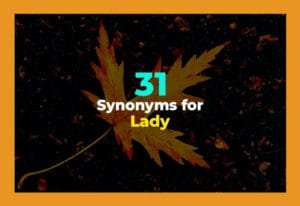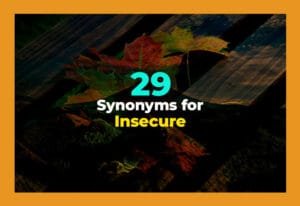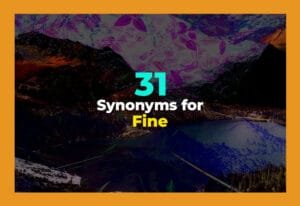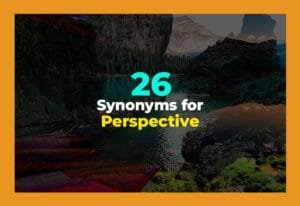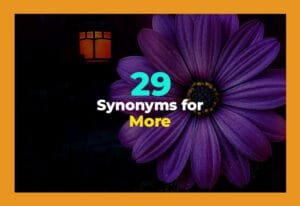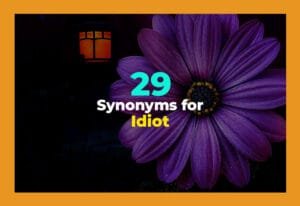You know how sometimes you want to say “show” but need something more exciting or specific? Whether you're talking about a performance, sharing something, or explaining an idea, there are so many cool words that can make your message pop. Words like display, reveal, or exhibit can bring your sentences to life. So, let's have some fun exploring different ways to say “show” with easy examples you can use every day.
1. Show
Show means to make something visible or clear to others. It can be anything from showing a picture to showing feelings. "She showed me her new drawing." You can also show a movie or a performance. It's the most basic word for letting someone see or understand something. Whether it's showing an object, an idea, or an emotion, the word "show" works perfectly in many situations. It's simple and very common, making it a great word for everyday use.
2. Display
Display means to arrange or put something in a way that people can see it easily. It's often used for objects, like art or products in a store. "The museum displayed ancient coins in glass cases." Display suggests a careful or organized way to make things visible. It can also mean showing feelings or qualities clearly. When you display something, you're not just showing it, you're making it stand out or be noticed by others. It's a word that feels a bit more formal than "show."
3. Exhibit
Exhibit is similar to display but is usually used in museums or art galleries. It means to put something on view for people to look at. "The gallery exhibited beautiful paintings from famous artists." Exhibit often involves special care in presenting things to the public. It's also used in law, meaning to present evidence. When you exhibit something, you are showing it as part of a collection or special event. It sounds professional and is great when talking about formal or organized showings.
4. Present
Present means to give or show something to others, often in a formal way. "He presented his project to the class." It can also mean introducing something for consideration. When you present, you don't just show—you explain or offer something with some attention or ceremony. It's used for speeches, gifts, or ideas. Present is a useful word when you want to talk about showing with purpose or importance. It's a step beyond just showing—it's sharing or introducing clearly.
5. Reveal
Reveal means to make something known or visible that was hidden before. "The magician revealed the secret behind the trick." It's often used when something surprising or important is shown after being kept secret. Reveal adds a sense of drama or excitement to showing something. It can be used for physical things, feelings, or information. If you want to talk about showing something new or unexpected, reveal is a perfect word. It helps create curiosity and interest in what is being shown.
6. Demonstrate
Demonstrate means to show how something works or how to do something, often by example. "She demonstrated how to bake a cake step-by-step." It can also mean proving or explaining an idea clearly. Demonstrate suggests teaching or convincing by showing. It's used in classrooms, presentations, and practical situations. When you demonstrate, you make your point clear through action or examples. It's a strong word for showing something with purpose and clarity.
7. Express
Express means to show feelings, thoughts, or ideas clearly. "He expressed his happiness with a big smile." It's often used for emotions or opinions, not just physical things. Express is about communication through words, actions, or art. When you express something, you share what you feel inside in a way others can understand. It's a personal and creative kind of showing. Use express when talking about feelings or ideas being made clear to others.
8. Indicate
Indicate means to show or point out something, often with a sign or gesture. "The arrow indicated the way to the exit." It's used for small or indirect showing. Indicate can be about giving clues or signals. It's common in instructions, maps, and reports. When you indicate, you don't fully explain or reveal—you just show enough to guide or inform. It's a subtle way of showing and is useful in many situations where direct explanation isn't needed.
9. Illustrate
Illustrate means to explain or decorate something with pictures, examples, or stories. "The book was illustrated with colorful drawings." It's often used in teaching or storytelling. When you illustrate, you help others understand by showing clear examples or images. This word connects showing with explaining. It's a creative way to make ideas or stories easier to see and understand. Use illustrate when you want to describe showing that helps learning or imagination.
10. Expose
Expose means to show something hidden or secret, often in a way that surprises or shocks. "The report exposed the company's illegal activities." It can also mean making something visible to the sun or air. Expose has a strong sense of uncovering or revealing truth. It's used in journalism, science, and sometimes personal situations. When you expose, you make sure people see something that was kept from them. It's a powerful word for showing things that matter or are important to know.
11. Disclose
Disclose means to make secret or private information known to others. "The company disclosed its new plans to investors." It's used mostly for information, not physical objects. Disclose is formal and often used in business, law, or news. When you disclose something, you carefully reveal details that were hidden before. It's about honesty and openness. Use disclose when talking about showing facts, plans, or secrets that were kept private.
12. Unveil
Unveil means to show or reveal something new for the first time, often in a special event. "The artist unveiled her latest sculpture at the gallery." It is used for exciting reveals like products, ideas, or monuments. Unveil suggests a dramatic or official showing. It's like lifting a cover to let everyone see something for the first time. This word is great for moments when showing is a big deal and involves celebration or attention.
13. Portray
Portray means to show or describe someone or something, especially in art, writing, or acting. "The actor portrayed a famous king in the movie." It focuses on representing characters, emotions, or ideas. Portray is common in storytelling, painting, and movies. When you portray, you show a picture or story of someone or something. It's a creative and detailed kind of showing that helps others understand what you want to share.
14. Depict
Depict means to show or describe something in pictures, words, or sculpture. "The painting depicts a calm river scene." It's similar to portray but more often used for art or descriptions. Depict helps viewers or readers imagine the subject clearly. When you depict, you create a visual or verbal image of something. It's a useful word when talking about artistic or detailed showing. Use depict for explaining or presenting scenes, people, or events.
15. Perform
Perform means to show a skill, talent, or action, usually in front of an audience. "The band performed live on stage." It's often used for music, acting, or dance. Performing is active showing, where you do something to entertain or demonstrate. It's about action and skill combined with showing. When you perform, you make your ability visible to others. It's a lively and public way to show something.
16. Broadcast
Broadcast means to send out a show, news, or information over TV, radio, or the internet for many people to see or hear. "The game was broadcast live on television." It's a way to show something widely. Broadcasting is about sharing with a large audience at the same time. It's common for news, sports, and entertainment. Use broadcast when you want to talk about showing or sharing something publicly and broadly.
17. Announce
Announce means to show or tell information clearly and publicly. "They announced the winner of the contest." It's used when sharing news or decisions with others. Announcing is formal and often happens at events or meetings. When you announce, you make sure everyone knows something important. It's a strong and clear way to show news or updates. Use announce to describe telling people official or important information.
18. Declare
Declare means to show or say something officially or clearly. "She declared her love for the city." It's a strong word often used for formal or serious statements. Declaring means making something known openly and confidently. It can be about feelings, intentions, or facts. When you declare, you don't just show quietly—you make a bold or clear statement. This word fits well in speeches, announcements, or important moments.
19. Feature
Feature means to show or include something as a special part of a bigger thing. "The movie features stunning special effects." It's used when highlighting important parts or qualities. Featuring is a way of showing something as a main or interesting element. You might feature a guest on a show or a product in an ad. It's a focused kind of showing that draws attention to one thing inside a bigger context.
20. Highlight
Highlight means to show or point out the most important or interesting parts of something. "The report highlights the main problems." It's used for emphasizing key details. Highlighting helps others see what matters most. It's common in presentations, writing, and discussions. When you highlight, you make sure attention is on the best or most urgent parts. It's a way to show by making something stand out clearly.
21. Manifest
Manifest means to show or prove something clearly. "Her kindness manifested in many helpful actions." It's about making feelings, qualities, or ideas visible through actions or results. Manifesting is showing something real or true. It's a word that sounds serious and thoughtful. When something manifests, it appears or becomes obvious to everyone. Use manifest to describe clear or strong showing of qualities or facts.
22. Represent
Represent means to show or stand for something else. "The flag represents the country's freedom." It's used when one thing shows or symbolizes another. Representing can be done through images, words, or people. When you represent something, you are a symbol or example of it. It's a way to show meaning or identity. This word is common in art, politics, and communication.
23. Stage
Stage means to organize and show a performance or event. "The school staged a play for the parents." Staging involves planning and putting on a show for an audience. It's a word connected with theater but also used for events or protests. When you stage something, you prepare and make it happen publicly. It's about creating a special moment for showing skills or ideas.
24. Air
Air means to show or broadcast a program on TV or radio. "The new episode will air tomorrow." It's used mostly in media and entertainment. Airing lets many people see or hear something at once. It's a simple word for showing a show or announcement publicly. Use air when talking about TV shows, radio, or online videos being made available to viewers.
25. Parade
Parade means to show people or things in a public event, often in a line or group. "The city paraded its holiday floats downtown." Parading is a festive way of showing pride or celebration. It involves movement and display for others to see. Parades often include music, costumes, and decorations. Use parade to talk about lively and joyful public showing events.
26. Promote
Promote means to show or advertise something to encourage interest or sales. "They promoted their new product on social media." Promoting is a way of showing that tries to convince or attract attention. It's used in marketing, sales, and events. When you promote, you don't just show—you try to make something popular or successful. It's an active and persuasive kind of showing.
27. Project
Project means to show or send images, light, or ideas onto a surface or into minds. "They projected the movie onto a big screen." It can also mean presenting thoughts or feelings outwardly. Projecting is about making something visible or clear to others. It can be physical, like light, or abstract, like confidence. Use project when talking about showing by casting, displaying, or communicating strongly.
28. Signal
Signal means to show or send a sign to communicate something. "The traffic light signaled that it was safe to go." It's used for simple or clear messages often done with lights, sounds, or gestures. Signaling helps people understand without words. It's a quick and direct way of showing. Use signal when describing ways to show information through signs or signals.

Final Thoughts
Using different words for "show" can make your writing and speaking more interesting and clear. Each synonym has its own special meaning, whether it's about displaying art, expressing feelings, or revealing secrets. Now that you've learned 28 amazing alternatives, you're ready to make your communication more creative. Don't just show—express, reveal, and demonstrate with confidence. Keep practicing and you'll see how fun it is to use new words every day!

